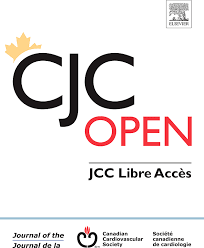The Canadian Alliance for Healthy Hearts and Minds: How well does it reflect the Canadian population?
Authors: Hall, R., Tusevliak, N., Wu, C.F., Ibrahim, Q., Schulze, K., Khan, A., Desai, D., Awadalla, P., Broet, P., Dummer, T.J.B., Hicks, J., Tardif, J-C., Teo, K., Vena, J., Lee, D., Friedrich, M., Anand, S., Tu, J. Background The intent of the Canadian Alliance for Healthy Hearts and Minds (CAHHM) cohort is to understand the early determinants of subclinical cardiac and vascular disease and progression in adults selected from existing cohorts; the Canadian Partnership for Tomorrow Project (CPTP), the Prospective Urban and Rural Evaluation (PURE) cohort and, the Montreal Heart Institute Biobank. We evaluated how well the CAHHM-Health Services Research (CAHHM-HSR) sub-cohort reflects the Canadian population. Methods Cross-sectional design among prospective cohort of community-dwelling adults 35-69 years of age who met the CAHHM inclusion criteria and, a cohort of adults 35-69 years of age who responded to the 2015 Canadian Community Health Survey-Rapid Response (CCHS-RR) module. The INTERHEART risk score was calculated at the individual level with means and proportions reported at the overall and provincial level. Results There are modest differences between CAHHM-HSR study participants and the CCHS- RR respondents in age (56.3 vs 51.7 mean years), proportion of males (44.9% vs 49.3%), and mean INTERHEART risk score (9.7 vs 10.1). Larger differences were observed in post-secondary education (86.8% vs 70.2%), Chinese ethnicity (11.0 % vs 3.3%), obesity (23.2% vs 29.3%), current smokers (6.1% vs 18.4%) and having no cardiac testing (30.4% vs 55.9%). Conclusions CAHHM-HSR participants are older, of higher socioeconomic status, and their mean INTERHEART risk score is similar. Differing sampling strategies and missing data, may explain some differences between the CAHHM-HSR cohort and Canadian community dwelling adults and should be considered when using the CAHHM-HSR for scientific research. Link: https://doi.org/10.1016/j.cjco.2020.07.013 Last Updated on August 20, 2020


